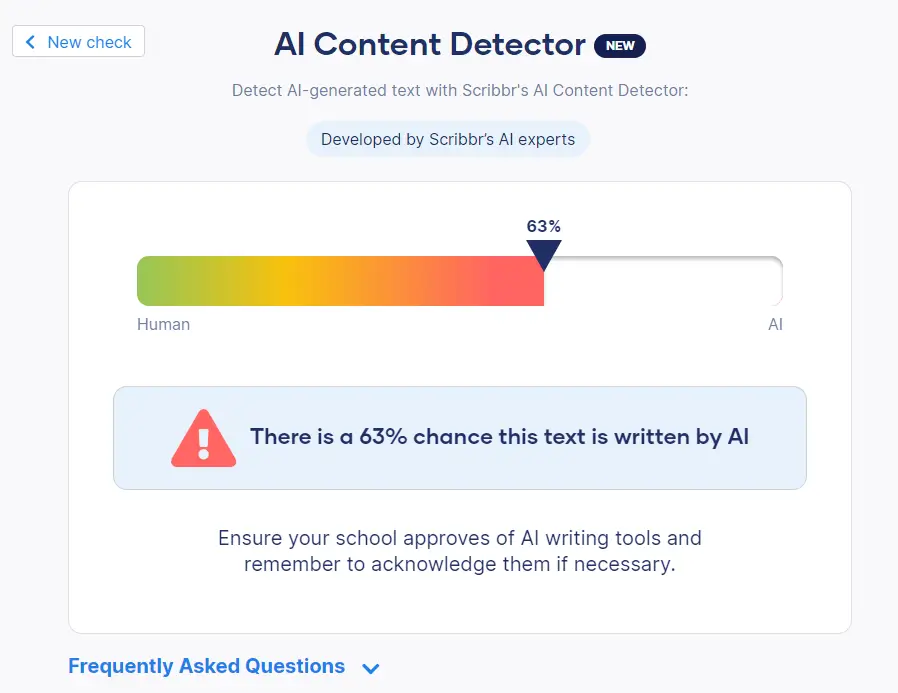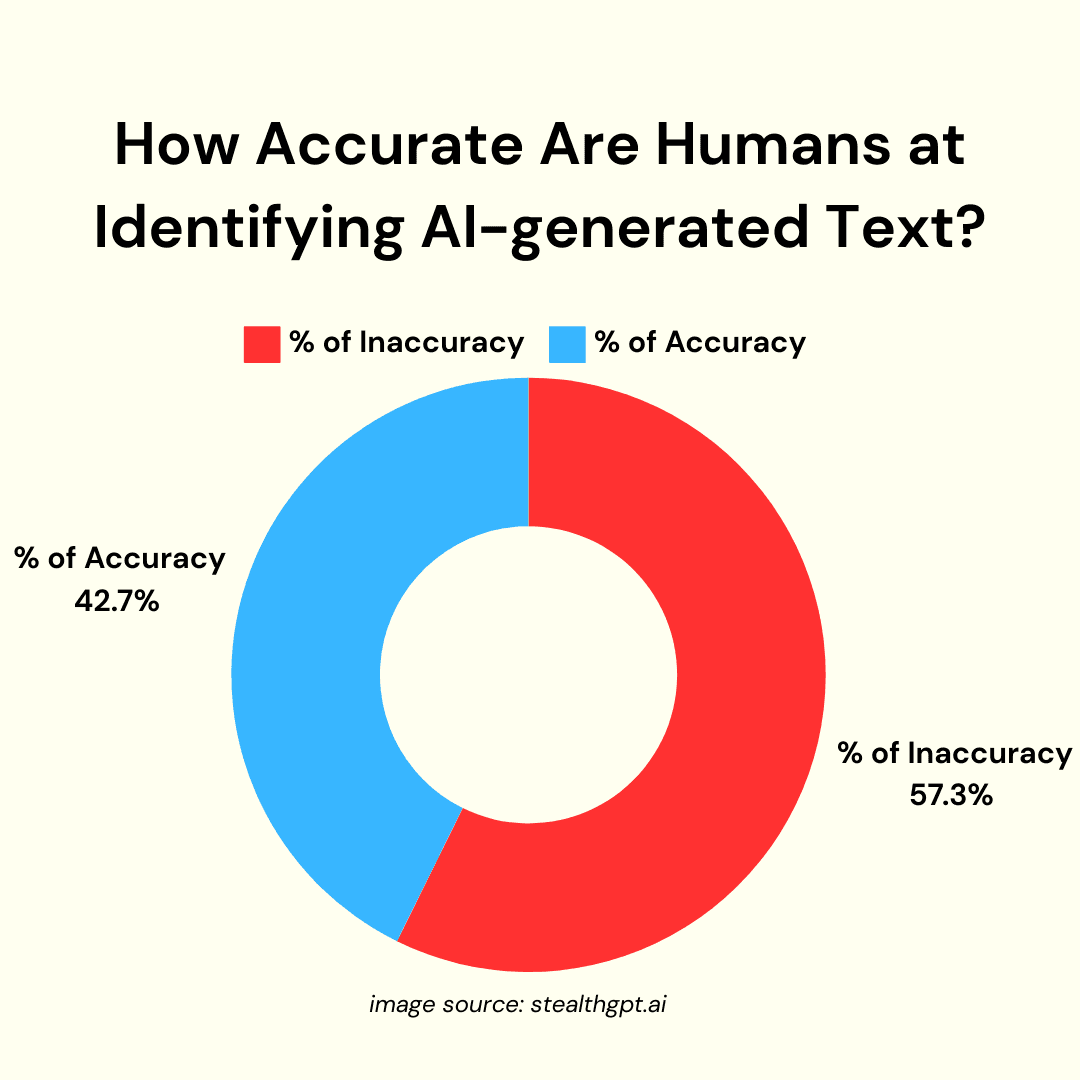AI Detector: Your First Line of Defense Against AI-Generated Materials
AI Detector: Your First Line of Defense Against AI-Generated Materials
Blog Article
Recognizing the Value of an Ai Detector in Today's Digital Landscape
As man-made knowledge remains to penetrate numerous facets of web content creation, distinguishing between machine-generated and human-generated material has ended up being increasingly intricate. This evolving landscape presents significant difficulties related to authenticity and reliability, demanding the development of AI detection tools. These instruments not only help in identifying AI-produced material but also support the honesty of details dissemination. Recognizing their role ends up being crucial as we browse a future where the credibility of media is under continuous analysis. What implications might this have for developers and consumers alike?
The Rise of AI Content

The increase of AI-generated material has considerable effects for different sectors, including advertising, amusement, and journalism - ai detector. Organizations are significantly making use of these technologies to boost efficiency, individualize material, and engage audiences better. The capability to evaluate huge datasets allows AI systems to customize content to fulfill particular user preferences, giving a more customized experience
Nevertheless, the proliferation of AI web content also increases vital factors to consider for content designers and customers alike. As AI comes to be a lot more incorporated into web content production operations, recognizing the subtleties of AI-generated product is essential for maintaining quality and relevance in a quickly advancing electronic setting. Accepting this technological innovation while continuing to be vigilant about its implications is critical for stakeholders in the digital media landscape.
Difficulties of Authenticity
The development of AI-generated web content has introduced significant challenges concerning authenticity in digital media. As formulas end up being more sophisticated, differentiating in between human-created and machine-generated material becomes increasingly tough. This obscuring of lines increases concerns concerning the reputation of details and the capacity for misinformation to multiply.
One of the key difficulties is the disintegration of trust among consumers. With AI efficient in creating sensible text, images, and video clips, people might locate it testing to recognize authentic sources from deceitful ones. This apprehension can cause a wider skepticism of all digital web content, complicating initiatives to recognize trustworthy information.
Additionally, the implications for copyright are significant. As AI devices generate material based on existing works, questions concerning possession and originality arise. Web content makers might battle to secure their work from uncredited AI recreations, threatening their source of incomes and rights.
Last but not least, the potential for malicious uses of AI-generated material, such as deepfakes and automatic propaganda, poses significant moral and social risks. These challenges highlight the immediate need for frameworks that copyright authenticity in the digital landscape, guaranteeing that details remains dependable and trustworthy.
Role of AI Detectors
Attending to the obstacles of authenticity in digital media requires innovative solutions, and AI detectors have actually become an essential tool in this initiative. These innovations are created to analyze and recognize content created by expert system, thereby facilitating the discernment between human-created and machine-generated materials. The role of AI detectors extends past plain recognition; they likewise add to preserving the honesty of information eaten by the public.
AI detectors use advanced algorithms to look at different aspects of electronic content, including linguistic patterns, structural abnormalities, and certain pens that show automation. Their application spans multiple markets, consisting of journalism, education, and social media sites, where the presence of AI-generated material can result in misinformation and erosion of count on.

Benefits of Making Use Of AI Detectors
Ensuring authenticity in electronic content symbolizes the basic demand for count on details sources, and AI detectors work as an effective ally in this quest. By recognizing AI-generated web content, these tools aid keep the honesty of info, consequently securing customers from false information and improving general content quality.
Among the main benefits of utilizing AI detectors is their capability to enhance content verification processes, significantly decreasing official site the time and effort required to assess the authenticity of electronic products. This effectiveness permits content designers, educators, and services to focus on creating high-grade and trusted info, instead of spending extreme resources on fact-checking.
Moreover, AI detectors this page foster responsibility among material designers. The expertise that AI-generated content can be recognized motivates openness and moral techniques in web content manufacturing. This, subsequently, adds to an extra informed digital community, as users can confidently involve with confirmed info.
Future of Material Confirmation
As the landscape of electronic web content continues to develop, the future of content verification provides both challenges and opportunities for keeping credibility. As AI technologies advance, so too do the methods for creating and sharing misinformation (ai detector). This arms race between material creators and confirmation devices necessitates the growth of a lot more advanced AI detectors efficient in critical real content from adjusted or made material

Additionally, the rise of decentralized innovations, such as blockchain, holds pledge for confirming material provenance, ensuring that users can trace the beginnings of the information they take in. Ultimately, the future of content confirmation will certainly depend upon our capacity to innovate despite evolving dangers, promoting a digital environment where authenticity is recognized and supported as a basic principle.
Final Thought
In final thought, the proliferation of AI-generated material requires durable mechanisms for authenticity verification. read here The future of web content verification hinges on the efficiency of AI detectors in keeping trustworthiness across various media systems.
AI content production tools, such as natural language processing models and generative adversarial networks, enable organizations and individuals to produce high-quality material at unmatched rates and lower expenses.
However, the proliferation of AI content likewise raises essential factors to consider for content developers and customers alike. As the refinement of AI-generated web content continues to progress, the function of AI detectors becomes significantly essential in guarding credibility and promoting transparency in digital interaction. The knowledge that AI-generated web content can be determined encourages openness and ethical practices in web content production.As the landscape of electronic material continues to develop, the future of content verification presents both tests and opportunities for keeping authenticity.
Report this page